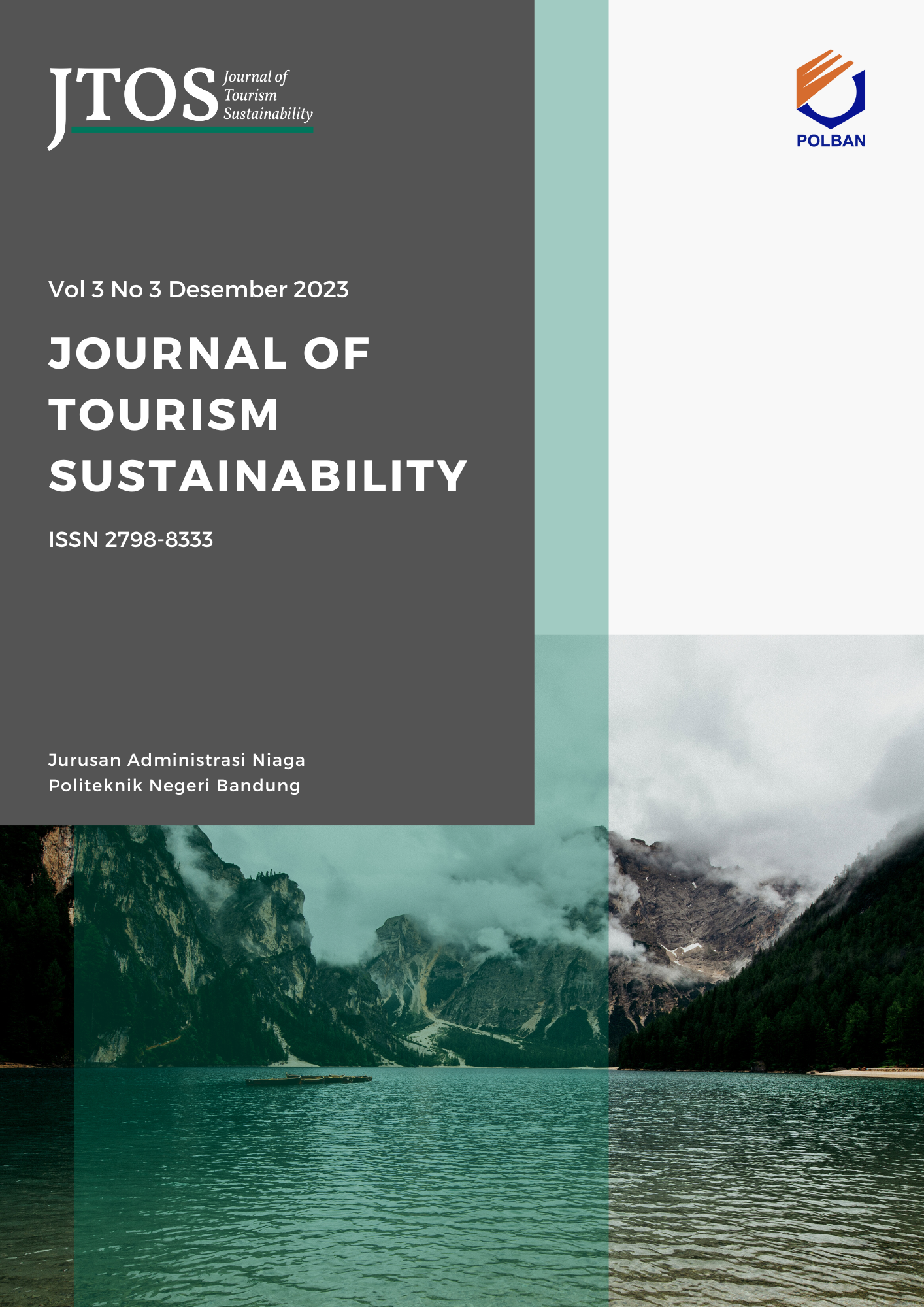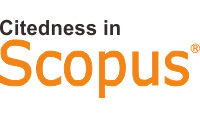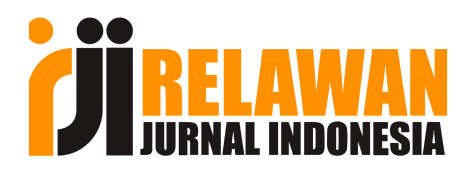The Resilience of a Coastal Tourist Destination: An Analysis of Pangandaran's Tsunami Risk
DOI:
https://doi.org/10.35313/jtospolban.v5i4.164Keywords:
disaster risk reduction, coastal tourism, tourism industry resilience, PangandaranAbstract
Pangandaran Beach, designated as a Regional Tourism Strategic Area under the Pangandaran Regency Tourism Master Plan 2018–2025, encompasses several key zones, including West and East Beaches, the Nature Reserve Tourism Park, Pananjung Seafood Tourism Centre, and Pananjung Tourist Village. This study investigates the resilience level of the tourism industry within the Pangandaran Beach area by applying a framework of seven tourism resilience elements: 1) Risk Understanding, 2) Business Operations, 3) Disaster Preparedness, 4) Mitigation Planning, 5) Response and Recovery, 6) Infrastructure and Environment, and 7) Governance and Institutions. Seventy tourism industry stakeholders were surveyed using stratified random sampling with a 90% confidence level and a 10% margin of error. The analysis employed descriptive quantitative methods and Importance-Performance Analysis (IPA). Findings reveal that three key resilience attributes fall into the low-performance quadrant: Disaster Mitigation (DM1), Evacuation Planning (DM2), and Building Structure (E1). Despite efforts by the local government and the Regional Disaster Management Agency (BPBD) to promote disaster risk reduction, DM1 and DM2 remain under-implemented due to industry concerns about potentially deterring tourists. Furthermore, E1 remains underdeveloped due to high renovation costs. Although the overall resilience level is moderate, enhancing stakeholder awareness and investment in disaster preparedness is crucial to strengthening the region's capacity to withstand tsunami-related risks.
References
Adventari, T., Pranowo, W. S., Adrianto, D., Ramdhan, M., Johar Setiyadi, dan, Tinggi Teknologi Angkatan Laut, S., Hidro-Oseanografi TNI Angkatan Laut, P., Data Laut dan Pesisir, L., Riset Kelautan, P., & Kelautan dan Perikanan, K. (2021). Penjalaran Tsunami Menuju Ke Outlet Arlindo Berdasarkan Skenario Gempa Megathrust Selatan Jawa.
Almutairi, A., Mourshed, M., & Ameen, R. F. M. (2020). Coastal community resilience frameworks for disaster risk management. In Natural Hazards (Vol. 101, Issue 2, pp. 595–630). Springer. https://doi.org/10.1007/s11069-020-03875-3
Boediman, A., Susanto, E., Afgani, K. F., & Rahadi, R. A. (2025). Financial Management Behavior of Micro-Businesses in Tourism Destinations: A Qualitative Study. Journal of Tourism, Hospitality and Travel Management, 2(1), 1–13. https://doi.org/10.58229/jthtm.v2i1.300
BPS. (2021). Kabupaten Pangandaran Dalam Angka 2021.
Cox, A. (2016). Tourism Resilience Index: A Business Self-Assessment. www.masgc.org/ri
Denitasari, F. (2019). Kajian Tingkat Resiliensi Bisnis Di Destinasi Pariwisata Pesisir Kabupaten Pangandaran Terhadap Bencana Tsunami.
Farida, M. A., & Rahayu, P. H. (2016). Sekolah Arsitektur, Perencanaan dan Pengembangan Kebijakan ITB Kajian Tingkat Resiliensi Kawasan Pariwisata Sanur terhadap Tsunami ditunjau dari Aspek Atraksi, Aktivitas, dan Amenitas. Perencanaan Wilayah Dan Kota.
Filimonau, V., & De Coteau, D. (2020). Tourism resilience in the context of integrated destination and disaster management (DM2). International Journal of Tourism Research, 22(2), 202–222. https://doi.org/10.1002/jtr.2329
Ghozali, H. I. (2016). Aplikasi Analisis Multivariate. Badan Penerbit Universitas Diponogoro.
Hall, C. M., Prayag, G., & Amore, A. (2018). Tourism and Resilience (C. Cooper, Ed.). https://doi.org/10.21832/HALL6300
Huang, J.-H., & Min, J. C. H. (2002). Earthquake devastation and recovery in tourism: the Taiwan case. Tourism Management, 23(2), 145–154. https://doi.org/https://doi.org/10.1016/S0261-5177(01)00051-6
Kebencanaan, K., Nasional, B., & Bencana, P. (n.d.). Indeks Risiko Bencana Indonesia Tahun 2021.
Nurlaila, S. S., Susanto, E., Afgani, K. F., Prawira, N. G., Fitriani, M., Prawira, A., Susanto, E., Nurlaila, S. S., Susanto, E., & Afgani, K. F. (2021). The Identification of Potential Rafting Tourism Products in Citepok Village, Sumedang Regency, West Java Province. Journal of Tourism Sustainability, 1(1), 32–42. https://doi.org/10.35313/jtos.v1i1.3
Orchiston, C., Prayag, G., & Brown, C. (2016). Organizational resilience in the tourism sector: An institutional assessment of the 2010–2011 Canterbury earthquakes. Annals of Tourism Research, 58, 48–62.
Pemkab Pangandaran. (2018). 7. Perda Nomor 7 Tahun 2018 Tentang Ripparda 2018-2025.
Perikanan, J., Kelautan, D., Kurniasih, I., Nurhayati, A., Lantun, ), Dewanti, P., Rizal, A., Program, ), Perikanan, S., Padjadjaran, U., Raya Bandung-Sumedang, J., 21 Jatinangor, K. M., & Korespondensi, ). (n.d.). Potensi Wisata Bahari di Kabupaten Pangandaran (Marine Tourism Potential in Pangandaran Regency).
Prayag, G. (2020). Time for a paradigm shift? A call for resilience and a social-ecological systems approach in tourism scholarship. Tourism Management.
Prawira, M. F. A., Prawira, A. B. A., & Susanto, E. (2024). Community Empowerment On Sustainable Outdoor Recreation In Pangandaran Tourist Destination. Co-Value Jurnal Ekonomi Koperasi Dan Kewirausahaan, 15(4).
Sadly, M., & Indonesia. Kedeputian Bidang Geofisika. (2019). Katalog tsunami Indonesia tahun 416-2017.
Sugiyono. (2012). Metode Penelitian Kuantitatif, Kualitatif Dan R&D. Alfabeta.
Supendi, P., Institut, W., Bandung, T., Muhari, A., Rawlinson, N., Klimatologi, B. M., Geosika, D., Nuraini, G., & Hanifa, R. (2020). Potential megathrust earthquakes and tsunamis off the southern coast of West Java, Indonesia. Research Square. https://doi.org/10.21203/rs.3.rs-104583/v1
United States. Indian Ocean Tsunami Warning System Program., Courtney, Catherine., United States. National Oceanic and Atmospheric Administration., Asian Disaster Preparedness Center., University of Rhode Island. Coastal Resources Center., & Nature Conservancy (U.S.). (2007). How resilient is your coastal community? : a guide for evaluating coastal community resilience to tsunamis and other hazards. [U.S. Agency for International Development].
Usher, L., Covi, M., Yusuf, J.-E., Giles, K., & Andrews, E. A. (2017). Tourism Business Resilience for Coastal Virginia Assessment Report Repository Citation. https://scholarship.law.wm.edu/vcpclinic
World Bank. (2020). Competitiveness in the Face of Disasters. www.worldbank.org
Downloads
Published
Issue
Section
License
Copyright (c) 2025 Grace Marpaung, Harkunti Pertiwi Rahayu

This work is licensed under a Creative Commons Attribution-NonCommercial-ShareAlike 4.0 International License.



.png)

















